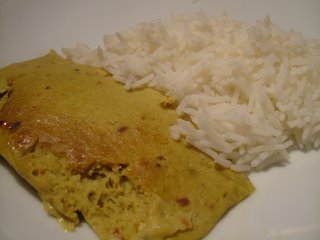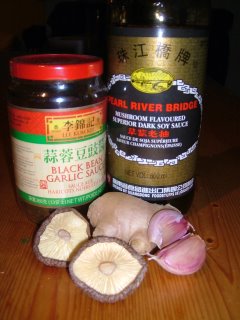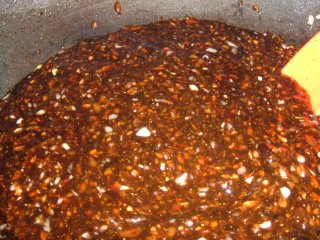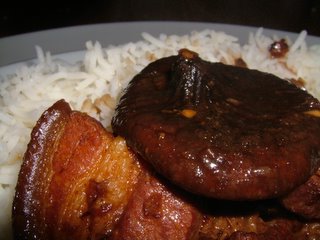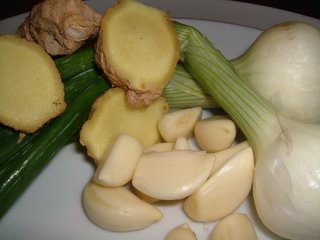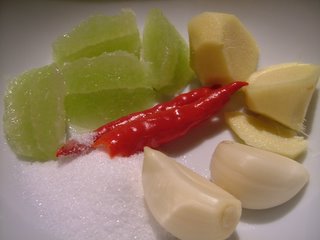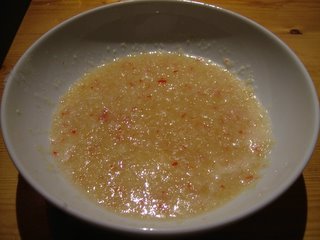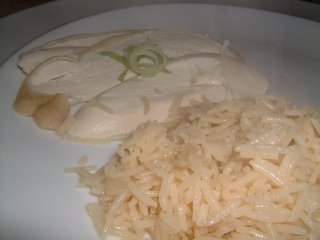When we visit family in Malaysia, we usually make a beeline to the nearest hawker stall and gorge ourselves on satay – sticks of marinated meat, grilled over charcoal and served with a peanut sauce. The very best I’ve ever had was in Ipoh, an old tin-mining town, where an old satay man (so old he was already working there on my Dad’s arrival in Malaysia aged seven – on seeing Dad, now bald and surrounded by his grown-up children, he still calls him China Boy) still makes satay on Jalan Bandar Timeh.
This is one of a few recipes which I love so much that I can be found back home, umbrella in one hand, hunched over a flickering barbecue in the very worst of weather. Sometimes an urge for satay will hit and there’s really not much I can do about it; it’s drive the hundred miles to Oriental City or make some at home.
For just this eventuality, there was a pot of palm sugar, fresh turmeric roots and lots of fresh lemongrass in the fridge. You really do need the fresh lemongrass (which you should be able to find at the supermarket), but if you’re stuck miles from an Oriental grocer, you can substitute a mixture of molasses and soft brown sugar for the palm sugar, and use ground, dried turmeric instead of the roots.
Some Chinese Malaysian satay vendors will put a small piece of fat pork in-between each piece of lean meat to add flavour and moisture. This is quite incredibly delicious. If you can find a strip of pork fat (I wish I could), just snip it into small pieces and marinade it with the meat, then construct the sticks with alternate bits of fat and lean meat.
To make about a kilo of satay you’ll need:
Marinade
Juice of 2 limes
1 teaspoon chilli powder
3 cloves garlic, crushed
2 turmeric roots (about the size of the top two joints of a woman’s little finger), grated
2 inches from the fat end of a lemongrass stalk, grated
1 tablespoon peanut oil
4 tablespoons palm sugar
8 tablespoons light soy sauce (I used Kikkoman)
1 teaspoon sesame oil
Meat
1kg chicken, lamb or pork (I used chicken)
Satay sauce
2 tablespoons peanut oil
4 shallots, chopped very finely
2 cloves of garlic, crushed
3 turmeric roots, grated
½ teaspoon ground chilli
2 teaspoons freshly ground coriander seeds
2 inches grated lemongrass
3 tablespoons smooth peanut butter
1 can coconut milk (preferably without emulsifiers)
1 teaspoon salt
Chop the meat into bite-sized pieces and leave in a bowl with all the marinade ingredients for two hours. (This is a very penetrating marinade and you may find the flavour too strong if you leave it for longer.) Reserve the marinade and thread the meat on bamboo skewers.
Make the sauce by frying the shallots, garlic, chilli, turmeric and coriander in oil until the shallots are soft and translucent. Add the peanut butter, salt and coconut milk along with six tablespoons of the reserved marinade and simmer hard for five minutes. Turn the heat down to a gentle simmer and cook for another fifteen minutes (get someone else to watch it and stir every few minutes to stop the sauce catching) while you go outside and grill the meat.
Take another lemongrass stick, cut off the bottom half centimetre and then bang the end of the stick hard with something heavy. The end of the stick will resemble a brush. You can use this to baste the chicken on the barbecue with some of the remaining marinade. Keep cooking until the chicken is shiny and starting to caramelise at the edges. (In Malaysia you are likely to see satay makers fanning the charcoal on their little grill to make it hotter. I find a large, well-ventilated barbecue with plenty of charcoal is usually hot enough.)
When the chicken is done, serve it immediately with the hot satay sauce. In Malaysia you’d eat this with ketupat (compressed squares of rice), chunks of raw shallot and of cucumber, all of which are dipped in the sauce. We ate it with grilled sweetcorn, smacked cucumber which I made with more palm sugar, and a bowl of white rice with some of the sauce thrown over it – delicious.


